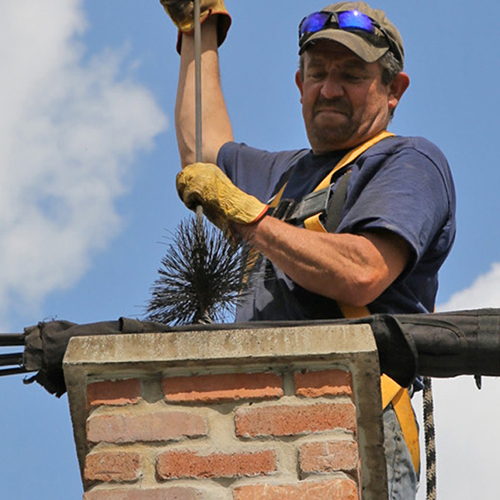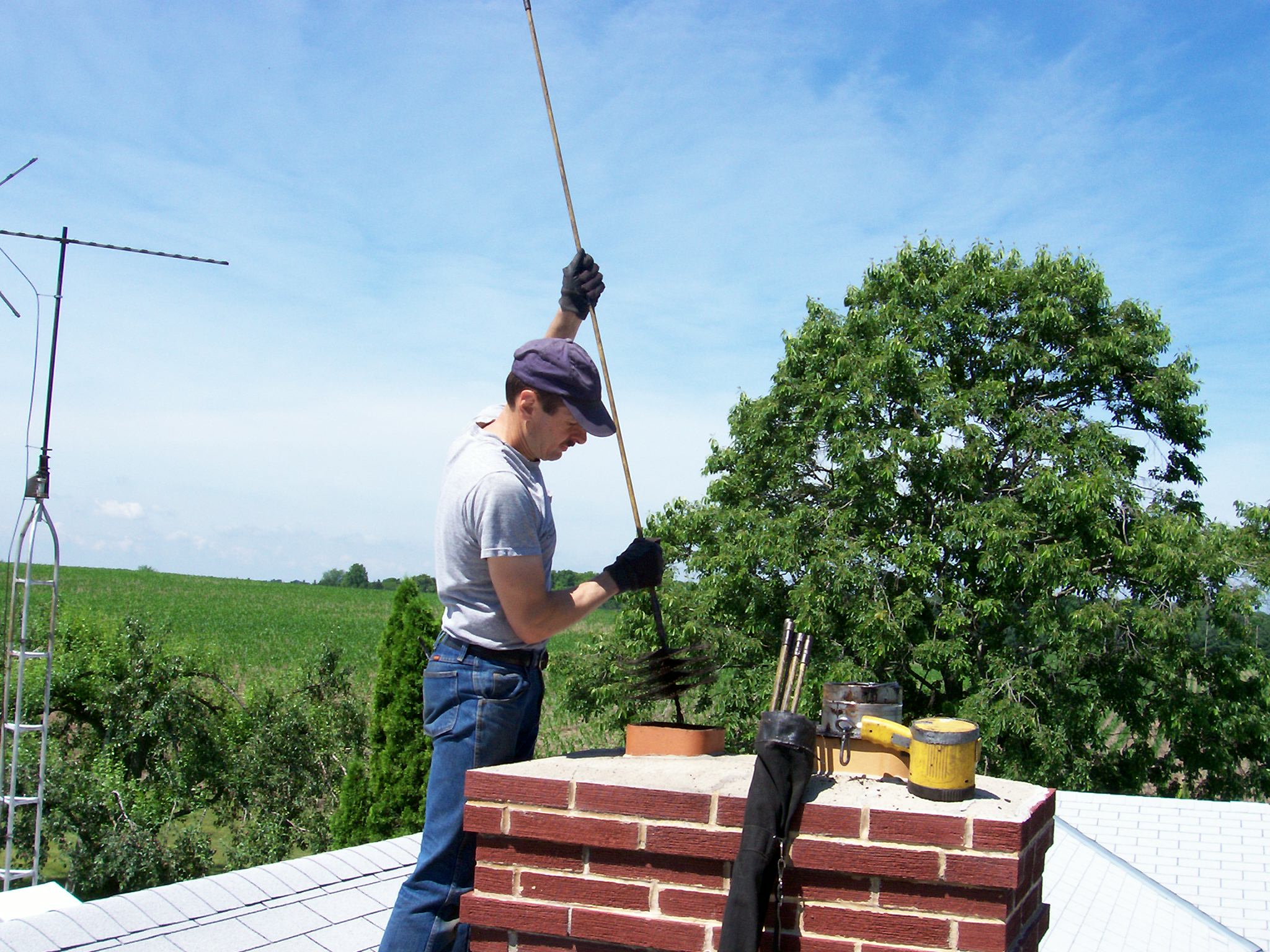Safe and Sound: Chimney Clean San Jose Professionals at Your Service
Safe and Sound: Chimney Clean San Jose Professionals at Your Service
Blog Article
Smokeshaft Cleansing: A Step-by-Step Guide to Keeping a Healthy And Balanced Fireplace
Regular smokeshaft cleansing is a vital part of this upkeep regimen. By following these guidelines, you will learn exactly how to collect the required tools, carry out a visual examination, clear particles and build-up, sweep the smokeshaft, and complete the final steps for ongoing upkeep.
Collecting the Needed Tools
To start the procedure of smokeshaft cleaning, the first action is to gather all the necessary devices. Having the right devices available guarantees a safe and reliable cleaning procedure. The crucial tools for smokeshaft cleansing include a smokeshaft brush, a ladder, ground cloth or plastic sheets, a flashlight, gloves, and a dirt mask.
The chimney brush is the key device utilized to get rid of soot and creosote build-up from the flue - Chimney Clean San Jose. It is essential to pick a brush that matches the dimension and shape of your chimney.
A flashlight is vital for checking the smokeshaft's interior for any indications of damages or blockages. Handwear covers are required to shield your hands from residue and other dangerous materials, while a dirt mask helps avoid the inhalation of particles.
Performing a Visual Inspection

Utilizing a flashlight, thoroughly take a look at the interior wall surfaces of the smokeshaft for any kind of indications of damage, such as fractures, loosened blocks, or mortar degeneration. These issues can compromise the smokeshaft's structural honesty and position a significant safety and security risk. Additionally, check for any type of indications of water damage, such as discoloration or efflorescence, as this can show a leaky chimney cap or flashing.
Next, inspect the chimney flue for any blockages. Search for the existence of nesting materials, leaves, or debris that might have gathered with time (Chimney Clean San Jose). These obstructions can limit air flow, enhance the threat of carbon monoxide build-up, and hinder the chimney's capacity to properly air vent smoke
Throughout the aesthetic examination, pay close focus to the smokeshaft crown, which is the top surface that shields the smokeshaft from dampness. Seek cracks or missing items in the crown, as these can enable water to go into the chimney and cause substantial damages.
Cleaning Particles and Accumulation
After completing the visual evaluation, the following action in chimney cleaning includes clearing up particles and build-up to ensure the proper performance of the fireplace. Over time, particles such as fallen leaves, branches, and pet nests can collect in the chimney, blocking the circulation of air and triggering prospective fire risks.
A chimney brush, specifically designed for this objective, is used to eliminate loose particles and creosote from the chimney wall surfaces. It is crucial to pick a brush that matches the size of your smokeshaft to make certain effective cleansing.
To start, place the brush right into the chimney and relocate it up and down, rubbing the walls to remove any type of debris or creosote. As soon as the cleaning is complete, utilize a vacuum cleanser or a chimney brush extension to get rid of the dislodged debris from the fireplace.

Sweeping the Chimney
The sweeping of the chimney is an essential action in keeping a healthy and balanced fireplace. With time, residue, creosote, and other particles can collect in the smokeshaft, blocking the flow of air and possibly creating a dangerous buildup of flammable products. Regular chimney sweeper not just makes sure proper air flow however likewise avoids the threat of chimney fires.
When it comes to chimney sweeping, it is very suggested to work with a specialist chimney sweeper. These professionals have the knowledge and tools needed to safely and successfully remove the accumulated particles from your smokeshaft. They will normally begin by covering the fireplace to prevent any kind of soot or particles from entering your home. Utilizing specialized brushes and vacuum devices, they will then cleanse the smokeshaft from top to bottom, making certain that all the accumulation is thoroughly eliminated.
It is essential to note that the frequency of smokeshaft sweeping depends on numerous factors, such as the sort of fuel made use of, the amount of use, and the type of smokeshaft. As a basic guideline, it is advised to have your Going Here smokeshaft brushed up and evaluated at least once a year.
Final Steps and Maintenance
To guarantee recurring maintenance and optimal performance, it is important to execute routine upkeep practices and comply with a comprehensive set of last steps for your fireplace. After finishing the smokeshaft sweeping procedure, the initial step in the final maintenance is to evaluate the smokeshaft cap and spark arrestor. These parts stop debris, pets, and rainwater from going into the smokeshaft. Inspect for any kind of signs of damage or clog, and tidy or fix them if necessary.

Inspect the within the fireplace for any indications of wear and tear, such as fractures, loosened blocks, or harmed mortar. These issues can influence the architectural stability and safety of the fire place. If any type of troubles are detected, get in touch with a specialist chimney sweeper or mason to address them quickly.
Finally, take into consideration mounting carbon monoxide gas detectors near the fire place and throughout your home. These gadgets can discover the existence of this hazardous gas, offering an early warning system in case of a smokeshaft malfunction. Frequently examine and change the batteries in these detectors to guarantee their performance.
Final Thought
Finally, complying with a detailed overview for smokeshaft cleaning is vital in preserving a healthy and balanced fireplace. By gathering the needed devices, performing a visual examination, getting rid of particles and build-up, and sweeping the smokeshaft, house owners can make sure the security and efficiency of their fireplace. Normal maintenance and cleansing will aid stop smokeshaft fires and boost air high quality in the home. It is vital to focus on chimney cleaning as a component of total home maintenance.
The necessary tools for smokeshaft cleaning include a chimney brush, a ladder, decline towels or plastic sheets, a flashlight, handwear covers, and a dirt mask.
A smokeshaft brush, particularly made for this objective, is used to get rid of loosened particles and creosote from the smokeshaft walls. Regular smokeshaft brushing up not just ensures correct ventilation however likewise avoids the risk of chimney fires.
When it comes to chimney sweeping, it is extremely advised to employ a specialist chimney sweep. After look at this now completing the smokeshaft sweeping process, the very first step in the last upkeep is to inspect the chimney cap and trigger arrestor.
Report this page